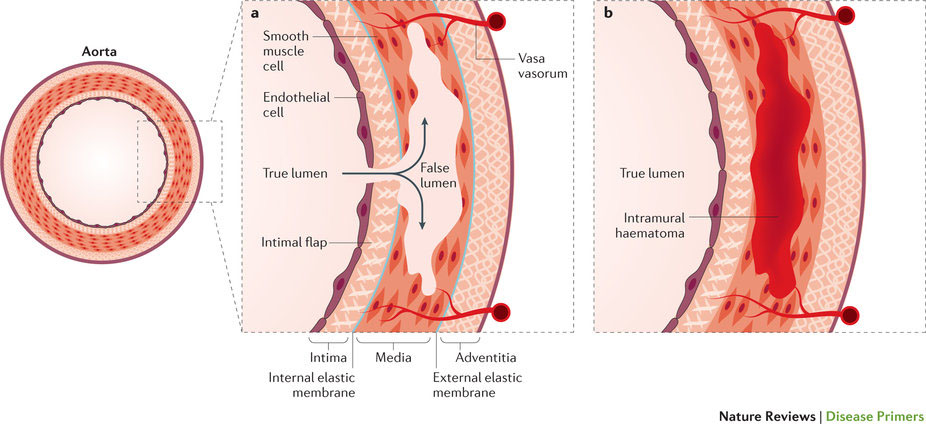大動脈解離
Aortic dissection
2016年7月21日 Nature Reviews Disease Primers Article number: 16053 (2016) doi: 10.1038/nrdp.2016.53

大動脈解離は生命を脅かす病態であり、大動脈中膜の裂口または大動脈壁内の出血によって大動脈壁の層が剝離(解離)して起こる。大動脈解離は65~75歳の高齢者に最も好発し、この集団の10万人あたりの年間発症頻度は35人になる。これ以外にも、高血圧、脂質異常症、およびマルファン症候群のような結合組織に関連する遺伝性疾患などがリスク因子として知られる。罹患者の管理では、迅速な確定診断と適切な治療が重要になる。現在では、大動脈障害に関する非侵襲的イメージング、バイオマーカー検査および遺伝的リスク因子のプロファイリングなどの集学的管理が行われている。大動脈損傷部位の修復あるいは置換の治療選択を行う上で、解離の重症度と部位ならびに手術合併症のリスクが考慮される。上行大動脈および大動脈弓の解離では、開胸手術による血管再建が最もよく行われるが、破裂、臓器灌流障害、定常的な痛み、低血圧または高リスクを示す画像所見を伴う下行大動脈解離には低侵襲血管内治療が最もよく行われる。近年、大動脈解離の病態生理に対する理解が進歩したことによって、より多くの患者で合併症のリスクが高いと考えられるようになり、そのため、薬物治療や外科的治療のみならず、血管内治療の必要性が増している。
PrimeView
大動脈解離は 患者の生命を守るために迅速な診断と治療が求められる緊急疾患である。このPrimeViewでは、大動脈解離に寄与する機構とリスク因子(高血圧、結合組織障害、炎症、アテローム性動脈硬化など)について取りまとめる。
本Primerの図解サマリー

